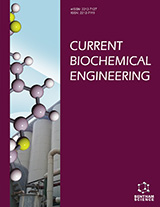Abstract
One of the key predictions that had combined bio-sciences with innovation
was bio-metrics, which represents a tool for security and criminology analysts to
develop more accurate, robust, and certain frameworks. Biometrics, when combined
with different combination techniques like feature-level, score-level, and choice-level
combination procedures, remained one of the most researched technologies. Starting
from uni-modular biometrics as unique marks, faces, and iris, they progress to
multimodal bio-metrics. By presenting a similar investigation of frequently used and
referred to uni- and multimodal biometrics, such as face, iris, finger vein, face and iris
multimodal, face, unique mark, and finger vein multimodal, this paper will attempt to
lay the groundwork for analysts interested in enhanced biometric frameworks. This
comparative research includes the development of a comparison model based on DWT
and IDWT. The method towards combining the modalities also entails applying a
single-level, two-dimensional wavelet (DWT) that has been cemented using a Haar
wavelet to accomplish the best pre-taking care of to eliminate disturbance. Each pixel
in the picture is subjected to a different filtering operation in order to determine the
peak signal to noise extent (PSNR). This PSNR analyses the mean square error (MSE)
to quantify the disruption to hail before playing out the division of the largest dataset to
the chosen MSE. In the most recent advancement, each pixel's concept is fixed up
using the opposing two-dimensional Haar wavelet (IDWT), creating a longer image
that is better able to recognise approbation, affirmation, and confirmation of parts. The
MATLAB GUI is used to implement the diversions for this enhanced blend
investigation, and the obtained outcomes are satisfactory.






















